Sixth Form Subjects

Physics
| Exam Board | OCR | Ask us a question | |
| Course Duration | Two Year, Full-Time | Apply | |
| Intake Date | September |
Course Overview
Physics is the study of everything and how it works!
There is no part of society that has not been affected by Physics. This course aims to introduce how physicists explain everything from quarks that make up the parts of the atom to the outer workings of the universe and everything in between.
Be a part of it!
Students look at theoretical analysis and practical results gathering to explain phenomenon in everyday life. All students can benefit from a logical approach to solving problems, so this course is for those passionate about science and engineering to students who want to work, for example in the banking sector.
Course Content and Assessment
The OCR Physics course provides a sound basis for learning at A Level and for higher education.
The assessment programme is as follows.
The course is split up into 6 modules which are examined externally, across 3 papers, at the end of Y13.
All three examined components contain some synoptic assessment, some extended response questions and some stretch and challenge questions. Stretch and challenge questions are designed to allow the most able learners the opportunity to demonstrate the full extent of their knowledge and skills. These will support the awarding of A* grade at A level, addressing the need for greater differentiation between the most able learners.
Module 1 – Development of practical skills in physics
1.1 Practical skills assessed in a written examination
1.2 Practical skills assessed in the practical endorsement
Module 2 – Foundations of physics
2.1 Physical quantities and units
2.2 Making measurements and analysing data
2.3 Nature of quantities
Module 3 – Forces and motion
3.1 Motion
3.2 Forces in action
3.3 Work, energy and power
3.4 Materials
3.5 Newton’s laws of motion and momentum
Module 4 – Electrons, waves and photons
4.1 Charge and current
4.2 Energy, power and resistance
4.3 Electrical circuits
4.4 Waves
4.5 Quantum physics
Module 5 – Newtonian world and astrophysics
5.1 Thermal physics
5.2 Circular motion
5.3 Oscillations
5.4 Gravitational fields
5.5 Astrophysics and cosmology
Module 6 – Particles and medical physics
6.1 Capacitors
6.2 Electric fields
6.3 Electromagnetism
6.4 Nuclear and particle physics
6.5 Medical imaging
Modelling physics (Examined Component 01)
This component is worth 100 marks and is split into two sections and assesses content from teaching modules 1, 2, 3 and 5. Learners answer all questions.
Section A contains multiple choice questions.
This section of the paper is worth 15 marks.
Section B includes short answer question styles (structured questions, problem solving, calculations, practical) and extended response questions.
This section of the paper is worth 85 marks.
Exploring physics Examined Component 02
This component is worth 100 marks and is split into two sections and assesses content from teaching modules 1, 2, 4 and 6. Learners answer all questions.
Section A contains multiple choice questions.
This section of the paper is worth 15 marks.
Section B includes short answer question styles (structured questions, problem solving, calculations, practical) and extended response questions.
This section of the paper is worth 85 marks.
Unified physics Examined Component 03
This component assesses content from across all teaching modules 1 to 6. Learners answer all questions.
This component is worth 70 marks.
Question styles include short answer (structured questions, problem solving, calculations, practical) and extended response questions.
There is also an endorsement of practical skills (Practical Component 04). Performance in this component is reported separately to the performance in the A level which is not examined externally. This component rewards the development of practical competency for physics and is teacher assessed. Learners complete a minimum of 12 assessed practical activities covering the technical skills (together with the use of apparatus and practical techniques) specified in Section 5h of the specification. Learners may work in groups but must be able to demonstrate and record independent evidence of their competency.
Learning Methods
This will include group work, short tests, practical work as well as the more traditional lecture and tutorial methods. Hopefully there will be an opportunity to develop the astrophysics work with a star – gazing trip..
Future Pathways
Engineering and Science based occupations look to see A Level Physics in an applicant’s portfolio, however the study of A-level Physics need no longer be seen as the passport to science and technologically related studies and jobs, but as a proof of general academic prowess.
Using data, analysing trends, working with physical quantities and evidence are all shown by having Physics A Level.
 POSSIBLE Careeer Pathways
POSSIBLE Careeer Pathways
Physics students progress to higher education courses in:
1. Mechanical engineers
2. Engineering professionals
3. Engineering project managers and project engineers
4. Programmers and software development professionals
5. Production and process engineers
6. Civil engineers
7. Metal working production and maintenance fitters
8. Engineering technicians
9. IT business analysts, architects and systems designers
10. Management consultants and business analysts
Entry Requirements
Standard Sixth Form Entry requirements to include:
Combined Science GCSE grade 6 or Physics grade 6 and Chemistry grade 6.
Maths and English, grade 6.
Student Testimonial
Testimonial in the pipeline
Other courses of interest
- Design Technology
- Further Mathematics
- English Language





